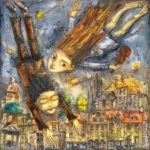h2>Dating : 3 Ways to Character Development in Acting that can be Used in Writing
One of the most sought after skills in fiction writing is the ability to create characters that are alive and real. Powerful and compelling.
We all want to create characters we fall desperately in love with, or we hate with all our might. Characters that make us laugh, make us cry. Characters we feel we know them, we quickly draw close to them and love them, we want them as our best friend, or better yet we want to be just like them. We are happy about their flaws, their faults, their mistakes, their obsessions, their fears. We love all of this because that makes us “Ok” too.
A good actor through a good character has the power to move and stir emotions, to change minds to add new dimensions into perspective, to contribute significant value to humanity.
When we think of our favourite story or book what stand out the most and sticks with us for life is the character or characters that lead us through the story.
“Art feeds our souls. We depend on it for growth”.
Actors are bound to be versatile, continually implementing and developing their skills, looking for tools that can aid them in adding depth to their work and raise their professional aptitude to a higher level of expertise.
Many Actors who are also Writers use the same or similar character development techniques in writing as in acting. These means that the characters they create are fuller as they expand when complemented with the creative process of both disciplines. Their characters are more vibrant and palpable.
As a Writer for character building, use this exercises in the form of visualising sessions, then write everything in detail. Even if what you write will not be part of your literary piece, it will help your character come into being.
Hot Sit
During this exercise, you will be “In-Character”. You will be your character. Act like your character. Think like your character. Talk as your character. Let your imagination guide you and allow no limitations in your exploration. When you throw yourself in the deep, you will be amazed by the results of the session. Make sure you record it.
For this, you would ideally have a friend to help you. They will be asking you random questions about who you are and about your life.
- Create an atmosphere to work. Do a Warm-up.
- Set up your studio. Preferably with just a chair under a spotlight.
- Sit on the chair and ask your friend to ask you questions while ‘in character’.
- The questions can be varied and about all sorts of things regarding who your role is. Ask your friend to get up close and personal with the questions . Take 30–90 minutes.
After this exercise, you will feel more in touch with your character and will know them much better.
To apply this exercise as a writing method for a fictional character write 50–100 random questions. Come back the next day and write or speak the answers ‘in -character’ and full detail. Elaborate on your answers as much as possible.
The Character’s Environment
Set up your studio to work.
Preferably ‘on set’, your character’s habitat, or if not in an empty studio. If you are in an empty studio imagine objects and furniture.
Walk around the space ‘in-character’. Take note of every single thing you see, make comments about everything that draws your attention, create old memories, imagine stories that have in them anything that would make the furniture and objects come alive in your mind. Now note the impulses you receive from your environment; is it a chair? how does it make you feel a d why? What do you think about when you sit on it? Explore the character’s environment for 15 to 90 minutes. Write down or record all the stories and feelings that arise from the session.
Wardrobe
In Our Method Acting Intensive Course, we spend time in character Search and Reflection through this Wardrobe Exercise and the exercises above.
Select pieces of your wardrobe that go with your character. When choosing each of the items ask yourself why is your character picking it and wearing it and answer the question. Note how your character feels wearing it. To go further describe their wardrobe in its entirety. Explain why they wear what they wear and how each item makes them feel. Include details of memories on how or when they got each of the pieces.
Go window shopping in-character. Take note of all the clothes your character would buy and wear and understand why exactly they w do so. Try on the clothing pieces. Note how your character feels wearing them. Stay in the feeling as long as possible then describe it in writing.
Later recall the clothes you picked and fully describe them in writing. What was your character was wearing on different occasions? Describe colours, textures, materials, fabrics, essence and feelings. Also, attempt to make remarks as to why they are wearing those pieces.
Your characters have different faces and many lives. To truthfully portray a role within a story or plot, you need to know your character inside out. Likewise, the most potent fiction has strong characters, and the most impacting plots are character-driven.




